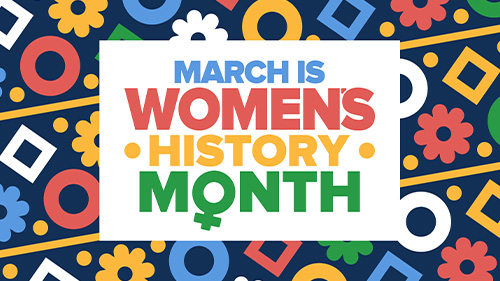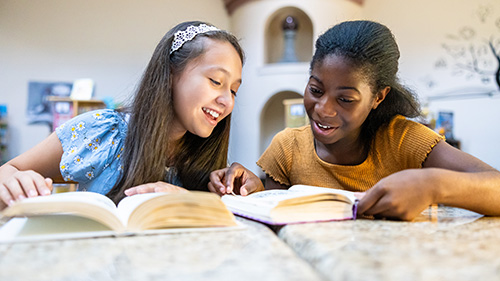Catfish in Space?
For some bizarre reason, I’ve recently gotten into the MTV show Catfish. Basically, it’s a documentary show where the hosts help people track down...
AP & Honors Mathematics
Explore Wiley titles to support both AP and Honors mathematics instruction.
Literacy Skills & Intensive Reading
Connections: Reading – Grades 6–12
Empower student success with a proven intensive reading program that develops strong reading skills in striving readers.
Drama, Speech & Debate
Basic Drama Projects 10th Edition
Build students’ confidence and competence with comprehensive, project-based theatre instruction.
Literature
Connections: Literature
Support learners as they study dynamic, relevant texts and bring the richness of diverse voices to students through literature.
Literature & Thought
Develop critical thinking, reading, and writing across literacy themes, genres, historical eras, and current events.
Language Arts
Vocabu-Lit® – Grades 6–12
Help students build word power using high-quality contemporary and classic literature, nonfiction, essays, and more.
Connections: Writing & Language
Help students develop grammar, usage, mechanics, vocabulary, spelling, and writing and editing skills.
Reading/English Language Arts
Measuring Up to the English Language Arts Standards
Incorporate standards-driven teaching strategies to complement your ELA curriculum.
English Language Learners
Measuring Up for English Language Learners
Incorporate research-based best practices for ELLs with an approach that includes a focus on language acquisition strategies.
Mathematics
Measuring Up to the Mathematics Standards
Incorporate standards-driven teaching strategies to complement your mathematics curriculum.
Foundations
Measuring Up Foundations
Help students master foundational math skills that are critical for students to find academic success.
Science
Measuring Up to the Next Generation Science Standards
Give students comprehensive NGSS coverage while targeting instruction and providing rigorous standards practice.
Assessment
Measuring Up Live
Deliver innovative assessment and practice technology designed to offer data-driven instructional support.
For a better website experience, please confirm you are in:
Last week during her first week of school, I had a conversation with a fresh-out-of-college-first-year teacher who was spending her evenings typing up grammar practice slides to keep students busy and, hopefully, ward off behavior issues.
When I suggested building up a classroom library and encouraging independent free-choice reading instead, the teacher pushed back, doubting that middle schoolers would read, but maybe she would try later in the school year.
This week another teacher, on the third day of school in a room full of young adult novels, had his students working on rote parts of speech practice.
Teachers, building a culture of reading begins on day one. And you can do it anywhere.
From the minute students walk into their English classrooms (really, I believe any classroom), they should find themselves in the presence of books. Books on shelves, on desks, on tables, on the trays of white boards surrounding the room.
Opportunities to taste books help to begin building a culture of reading. Hand students an index card as they walk into the room. Have them survey, explore, taste the books spread throughout the room. Look at the covers, read the blurbs, read a page and ask them to list five, or ten, or hell—one book they might be interested in reading. Take the card up as an exit ticket if you like.
Repeat the process the next day, and the next, and the next. Building a culture of reading starts with exposure to books.
And those classroom decorations, those TikTok, Pinterest worthy expressions of teacher personality—make sure one of them is your Next, Now, and Just Finished. Display the books or covers of the book you are currently reading, the book you plan on reading next, and the book you just finished reading.
Building a culture of reading means you as a teacher are reading too. As the jazz musician Charlie Parker said, "If you don't live it, it won't come out of your horn." We can’t expect students to grow into lifelong readers if we don’t show them what a lifelong reader looks like. You, as the teacher, are probably the strongest reader in the room. That’s your flex, so flex.
Building a culture of reading also comes from talking about books every day. Pick one of those books off the white board tray or shelf in the room and talk it up like it’s the best friend you want your other best friend to date. It’s also a good idea for you to immerse yourself in the world of young adult literature so you can make recommendations and talk like an insider.
Then let your kids read.
Put it on the agenda.
If you build it, they will come.
After several days of book tasting and book talks, I let my students know the time was coming for them to pick a book because we were going to read in class. And I built that day up like it was the Friday before winter break. After all, we are building a culture of reading.
On the day we began reading in class, I went through a pre-workout like spiel. We limbered up, got comfortable, had our books ready, and then I set them up for success. I told students I was going to set a timer for two minutes. I asked them to tune everything out, to try their best, and to focus on their reading for two minutes.
Timer set. I read too.
When the timer went off, I celebrated like I hit a personal best maxing out on bench press. (I don’t actually know what that is, but I’ve read that people do that.) I tell them to stand up and stretch if they need to, shake out their hands, breathe in and breathe out. I exaggerate this process and then I ask them to give me two more minutes. Ask them if they think they can handle it. In all the years I’ve done this with students, every class has believed in themselves for two more minutes.
Timer set. We read. Time goes off, and we move on.
Next day, we do it again for three minutes. Next day we do it again. And we do it again the next day, gradually building up the amount of time we read. Remember, we’re building a culture of reading.
Every fitness and healthy lifestyle account I follow on TikTok all say the same thing—consistency is key. It’s no different with building a culture of reading. My students knew they were going to read every day. We started every class period with independent free-choice reading. I never had bell ringers because by the time the bell rang, most kids were already reading because we built a culture of reading.
If you haven’t started building that culture, start now. We know that students will read given time to read, books they can and want to read, and opportunities to talk about their reading with others. That’s a culture of reading that grows lifelong readers and builds academic success.
And one last thing: Schools and Districts—it’s your responsibility to provide teachers with classroom libraries. No teacher should have to create wish lists, dig through bins of dusty relics at garage sales hoping for the occasional classroom library gem, or face loitering charges at Half-Priced Books scrounging for the books you know your students want. Providing classroom libraries builds a culture of reading.
Eventually you won’t need bell ringers because your students will start asking if they can read for the entire period.
Now that’s building a culture for reading.
Michael Méndez Guevara is a former high school journalism and English teacher who spent his time in the classroom helping students see themselves as writers and fall in love with reading through the world of young adult literature. As an educational sales consultant with Perfection Learning®, Michael works with teachers and schools on improving their literacy instruction and providing resources to help students achieve academic success. He has taught elementary school, middle school, and high school and has worked as a district level leader and served on the Texas state standards revision committee that developed the state’s current literacy standards. He is the father of three adult sons, the youngest a student at the University of Kansas—Rock Chalk! Michael is working on a professional development book for literacy educators and currently has agents reading the manuscript of his young adult novel, The Closest Thing to a Normal Life. When he's not reading, writing, or running, Michael is fully committed to watching as much Law & Order as possible.

For some bizarre reason, I’ve recently gotten into the MTV show Catfish. Basically, it’s a documentary show where the hosts help people track down...

There are so many more interesting methods to writing a character analysis than writing an analysis paragraph. Oftentimes, English or language arts...

Laura Kebart (English Language Arts Teachers) shares strategies for 6-8 ELA teachers for creating rubrics that center student improvement. {%...

Over the course of my career as a middle school ELA teacher, I’ve graded more writing pieces than I can count. I’ve graded late into the night, on...

In recent months I learned, along with others around the world, of the horrific stories of the mass unmarked grave sites of Indigenous, or...

In recent months, the Taliban in the Middle East has taken over once again after American troops removed themselves. The first person I thought of...

The best part of my job is the gift of diversity and the stories I get to prompt students to produce in a creative way through narratives, short...

In the first blog post of the Rhetoric Meets Remedy series, I discussed the importance of teaching for transfer. Teaching for transfer is vital...

Carmel McDonald walks you through how she walks her middle school ELA students through narrative structure with an interactive plot map. Download her...

It’s that time! The school year is beginning and you’re ready to welcome up to 180 new learners into your classroom. Whether you’re in your first...

Although our middle school ELA students should have been capitalizing words like "I" since they were in early elementary school, many either just...

Dynamic and flat characterization has been in language arts and English curricula forever, it seems. How do we up the rigor as students advance in...

